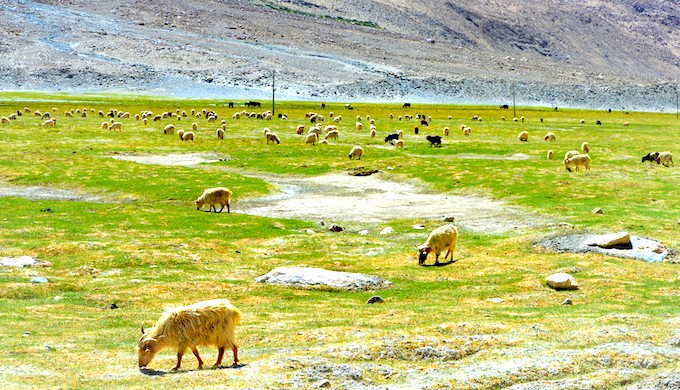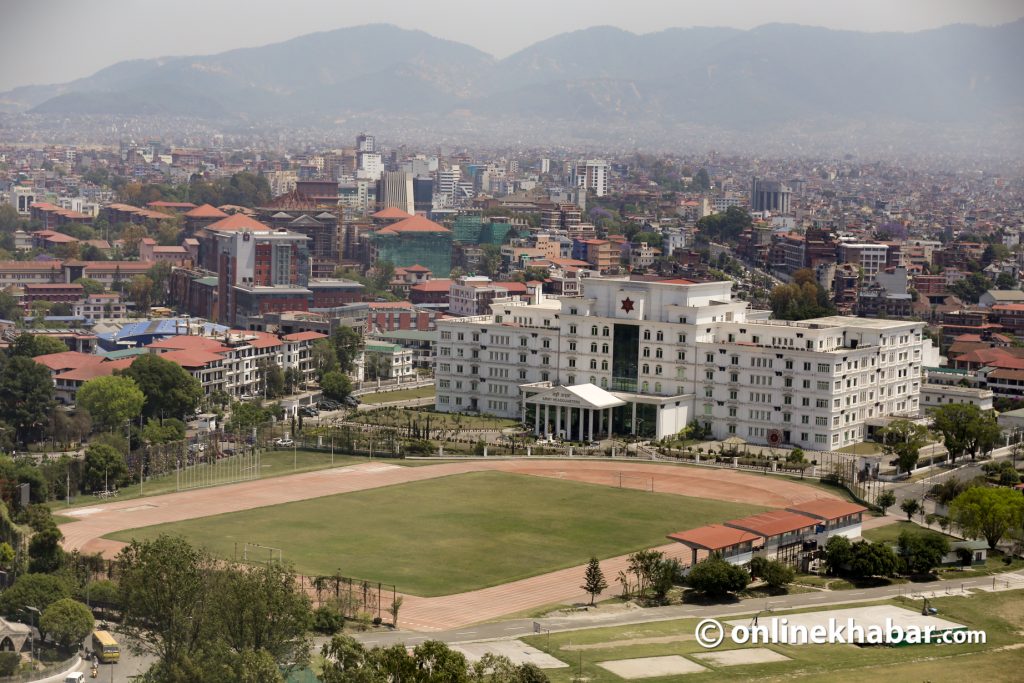
The highland goatherds of Changthang in Ladakh are gradually abandoning their nomadic life as the Pashmina goats famed for their wool die in large numbers due to a changing climate.
In recent years, thousands of Pashmina goats, whose fine wool is weaved into the famed pashmina shawls by Kashmiri artisans, have perished in the Ladakh Himalayas due to extreme cold in winter and lack of fodder associated with climate change. The nomads of Ladakh’s Changthang region, who rear the Pashmina goats and have traditionally braved the cold winters, complain of extremely harsh winters and dry summers, which has forced some of them to migrate to and settle in Leh city.
The Ladakh region of Himalayan state of Jammu and Kashmir is part of the Tibetan plateau, which more than 14,000 ft above sea level. Tibet is often called the roof of the world. Little grows in the parts of this cold desert, including Ladakh, where the temperature can drop to minus 35 degrees Celsius. Pashmina is drawn from the Pashmina (Changra) goats raised by the nomads in the high mountains of Changthang region of Ladakh. The local Changpa nomads also rear sheep and yaks.

The Changthang region of the larger Tibetan Plateau does not normally witness heavy snowfall. But that has changed in recent years. In 2013, heavy snowfall deprived the Changpas of fodder for their animals resulting into death of an estimated 25,000 goats as per the records of district sheep husbandry office of Leh. Thousands of goats, the district officials said, were also killed in 2008 due to extreme cold.

“In the past decade I have seen such heavy snowfall three times,” said Bihkit Angmo, 53, who rears goats in Changthang. In Kharnak, a nomadic settlement 173 km east of Leh, the capital of Ladakh, nomads said this new trend of heavy snowfall in winters “has left us quite worried.”

In most of the summers now, unlike in the past, pastures stay parched and barren most of the year, the nomads said. “We have to go long distances to find suitable pasture for our livestock,” said Angmo.
While Angmo’s family is one of the few families that have stayed behind in Kharnak to still rear Pashmina-producing goats, around 80 families out of a total of 98 have migrated from this area, said the officials at district sheep husbandry office in Leh.
“Our surveys show that five to 10 families from the Changthang area migrate to Leh city every year,” said an official who spoke on condition of anonymity.
As per the official estimates, some 2,500 Changpa families manage about 200,000 pashmina goats in Changthang. But due to the worsening climatic conditions, many families feel compelled to leave Changthang and migrate to the city for alternative livelihoods.
This may act as a serious threat for Kashmir’s Pashmina industry in the future. Kashmiri craftsmen have used Pashmina for generations to make the renowned pashmina shawl, woven with hand and often embellished with fine embroidery. A pashmina shawl can cost about USD 200-600 in the international market.
This story was first published on India Climate Dialogue























